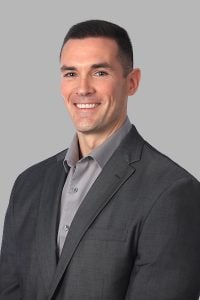Errors and omissions (E&O) coverage for insurance agents has always been a high frequency and high severity class of business. But with the current hard market conditions making it more difficult for insureds to get the coverage they need, agents and brokers face even greater exposure.
Insurance providers are restricting coverage capacity and raising rates in response to more intense catastrophes and social inflationary trends, which is impacting their bottom lines. Profitability across the property and casualty industry is down, with companies experiencing a “$26.9 billion net underwriting loss in 2022,” according to financial data from Verisk and the American Property Casualty Insurance Association (APCIA).
Last year’s underwriting losses were about 70% higher for the industry than in 2021. And though there is some optimism that 2023 will be a better year in terms of overall profitability, the Insurance Information Institute (I.I.I.) said recently that the industry is still likely to end the year with a combined ratio of 102.2 — a similar result to 2022.
The bottom line is the hard market isn’t likely to end soon, and insureds are feeling the sting in the form of higher premiums and fewer coverage options. Agents and brokers are busier than ever — and more vulnerable — as they work to fulfill client coverage needs and stay on top of market changes.
Communication, education, documentation
The most common E&O claims against insurance agents are related to negligence. During a hard market, agent E&O claims are known to increase, the Big “I” reports. There are a variety of factors causing this. Navigating the current hard market conditions is not easy for agents and brokers; they must stay abreast of changes and properly educate their clients on how carriers are responding to decreased profitability. They must also ensure their customers are aware of new policy exclusions or eligibility requirements, reductions in limits and risk management opportunities.
Insurance agent E&O claims require a double trigger: The insured sustains a loss that may not be covered by their policy, either because of a gap in coverage or inadequate coverage limits to pay the loss. When this happens, they may allege their insurance agent failed to perform their duty or was negligent.
Agents and brokers who provide other services, such as claims handling or acting as a managing general agent (MGA), carry even more exposure to claims related to missed deadlines or settlements or breaches in underwriting authority.
Ultimately, the onus falls on agents and brokers to present all the correct information to their clients on what exposures they face and what coverage options are available to address them. An agent or broker’s failure to do their due diligence or to educate insureds on coverage gaps increases both the agent’s and the insured’s exposures, which is why proper communication with both carriers and clients is essential to avoiding E&O claims. A J.D. Power survey of insurance consumers also found that proactive communication about coverage or premium changes improves customer satisfaction.
Still, higher premiums and less capacity means insureds are likely to pay more for less coverage and may push back on coverage recommendations from their agent. Clients may opt not to renew a certain coverage because it is cost prohibitive or may purchase lower policy limits than what is needed to adequately protect their exposure.
At the same time, the cost of paying claims has also gone up significantly, particularly on property claims, thanks to inflation, supply chain issues and higher property values. Insureds most likely need more coverage today to protect them against claims that could occur down the road. This is a difficult sell to clients when premiums have gone up significantly.
Agents should carefully document when they have these conversations with their clients. If necessary, ask clients to acknowledge in writing that they waived a certain coverage or requested a lower limit than what their agent recommended.
When clients can’t find the coverage they need, or if it is too expensive, agents should explore other options, including excess coverage.
Excess capacity is available and affordable for many lines of business and can help build up a client’s insurance program to ensure they have adequate liability limits. Securing excess coverage for clients can also help protect an agent and broker from runaway claims that go beyond the client’s primary policy. If you aren’t familiar with the excess market, find a specialist who can help you identify the right coverage for your client.
Know your own coverage
Proper coverage isn’t just important for protecting clients; it’s also important for agents and brokers to protect themselves.
The insurance agents’ E&O market is generally stable in terms of carriers, but it is experiencing similar challenges as other market segments with tighter policy terms, lower limits and higher rates. Social inflation is resulting in higher defense costs and agent E&O claim payouts as well, so agents and brokers should review their current policy and limits.
After carrier fears subsided that communicable disease exclusions related to the COVID-19 pandemic would bring an onslaught of claims against insurance agents, insurers have tried to anticipate future claims and get ahead of what those may be. To that end, there have been some changes to E&O policy terms and conditions that agents and brokers need to be aware of. These may include exclusions related to social engineering fraud and wire transfers, and exposures that could arise from housing personally identifiable info such as biometrics.
 Tom Rea
Tom ReaAgents and brokers should work with an insurance E&O specialist who can review their current book of business and E&O policy and advise what coverage is best in a hard market.
Tom Rea ([email protected]) is executive vice president of Berkley Service Professionals, a Berkley Company. He has nearly 25 years of experience in the industry, predominantly in specialty professional liability insurance, and has created several successful miscellaneous professional liability products and teams from the ground up. He is based in Glastonbury, Conn.
Any opinions expressed here are the author’s own.
See also:











